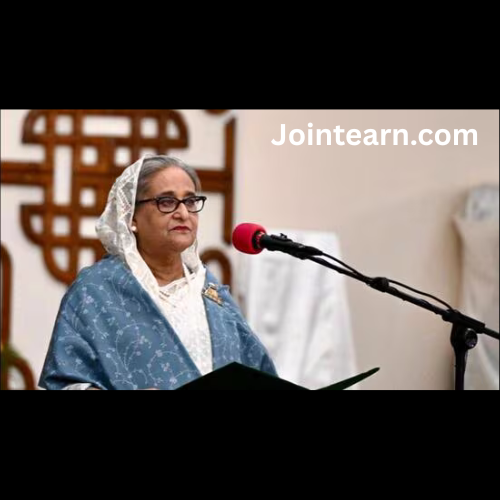New Delhi | November 13, 2025 – In a painstaking reconstruction of events leading up to the deadly Red Fort car blast, Delhi Police have revealed chilling details about the movements and modus operandi of suspect Dr Umar Nabi, who drove an explosives-laden vehicle into the heart of the national capital on November 10. Using footage from more than 50 CCTV cameras, investigators have mapped the suspect’s last hours, showing a carefully orchestrated plan that combined stealth, patience, and meticulous route selection.
The investigation has also uncovered that Dr Nabi, along with two other suspects – Dr Muzammil Ahmad Ganaie and Dr Shaheen Shahid – allegedly used a Switzerland-based encrypted messaging app to coordinate activities related to the terror plot. According to police, the four suspects had pooled over ₹26 lakh in cash, which was entrusted to Dr Nabi for operational use. This money was reportedly used to purchase approximately 26 quintals of NPK fertilizer, worth around ₹3 lakh, from suppliers in Gurugram, Nuh, and nearby towns. The fertilizer, combined with other chemicals, is known to be used in the manufacture of Improvised Explosive Devices (IEDs).
Delhi Police officials described the terrifying scenario of Dr Nabi’s final journey, from leaving Faridabad to maneuvering the explosives-laden car slowly toward the Red Fort Metro station seconds before the blast. A large bag, believed to contain explosives, was placed on the back seat of the white Hyundai i20 he drove into the city.
Investigators have pieced together a route-mapping exercise showing the suspect’s movements across Haryana and Delhi. Dr Nabi began his journey from Faridabad, traversing the Delhi-Mumbai Expressway, but deliberately avoided major towns. He spent the night at a roadside eatery in Firozpur Jhirka, Nuh district, remaining calm and composed, indicating premeditation rather than panic. He appeared to prefer smaller highways and isolated locations over crowded thoroughfares, likely to avoid attracting attention.
On the morning of November 10, CCTV cameras captured him driving slowly toward Delhi. He stopped at least twice along the way—once for tea and once to check his mobile phone. Police said he entered Delhi through the Badarpur border, and footage from the toll plaza shows him paying the toll while wearing a mask, repeatedly glancing toward the cameras, suggesting awareness of being under surveillance.
From Badarpur, Dr Nabi’s journey continued through multiple districts, moving in a zigzag pattern across the city—Southeast Delhi, East Delhi, New Delhi, Central Delhi, and even Northwest Delhi’s Ashok Vihar—possibly to confuse security agencies or study crowd patterns. CCTV footage shows him pausing at roadside eateries, ordering food, and even visiting a mosque near Asaf Ali Road close to Ramlila Maidan, where he stayed in the parking area for about three hours, performing prayers before proceeding.
Between 8:00 am and 3:19 pm, Dr Nabi’s vehicle made several loops across the city. Around 3:19 pm, the car was parked quietly near the Red Fort, close to Sunehri Masjid parking, remaining stationary for roughly three hours amid other vehicles. Around 6:22 pm, the suspect drove toward the Red Fort Metro station. At 6:52 pm, the car exploded in a powerful blast, killing 13 people and injuring over two dozen others. The explosion shattered windows, scattered debris, and caused widespread panic. Traffic surveillance captured the moment when the slow-moving white car erupted into flames during rush-hour traffic.
Investigators also reported the discovery of a severed hand on the roof of a nearby shop, a few meters from the blast site, behind the Jain Temple, highlighting the gruesome aftermath of the incident.
Police sources indicate that Dr Nabi, once known for his academic achievements, had allegedly radicalized over the past two years and was part of multiple suspected messaging groups. The DNA test from samples collected at the Red Fort blast site confirmed that Dr Umar Nabi was the driver of the explosive-laden car.
The investigation also extended to institutions associated with the suspects. The National Assessment and Accreditation Council (NAAC) issued a show-cause notice to Al Falah University, which is under scrutiny following the blast for allegedly displaying false certification on its website, further expanding the probe into potential institutional lapses.
Delhi Police officials emphasized that the reconstruction of Dr Nabi’s movements underscores meticulous planning, tactical patience, and operational secrecy. From carefully selecting lesser-known routes to managing stops for meals and prayers, the suspect’s actions reveal a calculated effort to avoid detection while preparing for a devastating act of terror in the national capital.
Authorities continue to examine phone records, digital communications, and financial transactions of the suspects to trace connections, funding sources, and possible co-conspirators. The case remains under active investigation, with the police determined to dismantle the network involved in orchestrating the Red Fort blast.
The chilling details of Dr Nabi’s movements offer a stark reminder of the sophistication with which modern terror plots can be executed and the challenges faced by law enforcement agencies in preempting such attacks, especially in densely populated urban centers like Delhi.


Leave a Reply